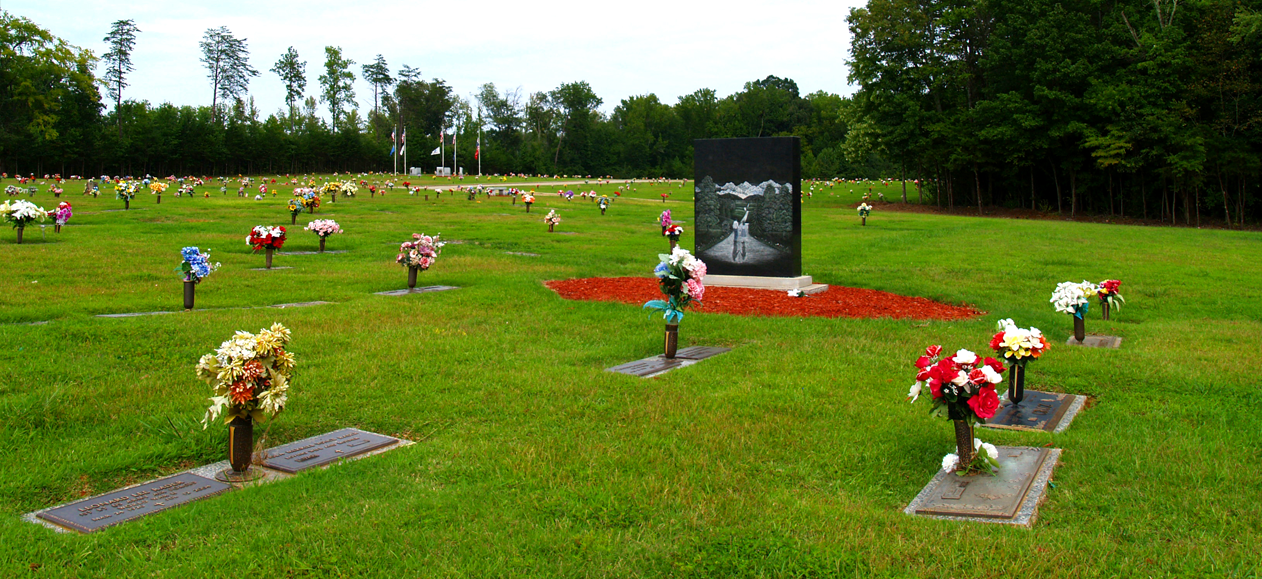While other burial methods have become more commonplace, traditional burials are still the most  common burial choice in the United States. Usually, they follow a funeral service and precede a reception.
common burial choice in the United States. Usually, they follow a funeral service and precede a reception.
A traditional in-ground burial may be the right choice for you or your loved one if you prefer to keep to family traditions, if you prefer the idea of outdoor visitations, or if you’re interested in being laid to rest alongside other family members who were also given traditional burial services. Whatever the reason for a traditional burial, there are several other options to consider once you’ve decided that this is the choice for you or your loved one. Below, we’ll list the most important factors for your convenience and consideration when buying a burial plot.
1. Choosing the Location of Your Traditional Burial
Location is often the first thing someone takes into consideration when thinking of a traditional burial. Where will I or my loved one be buried? What’s the prettiest location available? What’s the cheapest? Does my family have a reserved plot or a tradition of side-by-side burials with other family members? Do I want a plot near others, or somewhere more secluded? Will my family be able to easily locate the plot to visit in the future? These questions are all ones to consider if you’re looking more seriously into the idea of a traditional in-ground burial.
Oftentimes these answers can come down to a matter of family tradition and personal preference. It’s important to consider them beforehand, though, so that you can have everything sorted out in advance and get the peace-of-mind that comes with having these arrangements squared away.
2. Choosing the Right Burial Plot: Single, Side-by-Side, Double-Depth
Similar to the selection of location, it’s important to consider if you or your loved one is going to be buried alone, alongside, or even in the same plot as another family member.
The names of these plots are all fairly self-explanatory: a single plot can be anywhere in a cemetery or memorial park of your choosing, and is intended for one burial. To reserve multiple side-by-side plots obviously requires more space, and, consequently, it’s better to plan as early as possible to have the widest range of location options available for your selection. Perhaps the least familiar term to most people is a double-depth plot – a grave opened to fit two caskets stacked on top of one another. Regardless of your decision, this decision is likely to come before or follow closely after the selection of location, so it’s important to give it some thought when planning for a traditional burial service.
3. Choosing a Burial Marker or a Burial Monument
Monuments are what usually come to mind when we consider a typical cemetery - the idea of a white or gray marble headstone with dates and names elegantly engraved. These tombstones can be customized in shape, size, color, engraving, and various other ways to ensure that you or your loved one are memorialized in exactly the way you envision. In a memorial park, you’ll encounter bronze markers, instead, which will typically display the same information seen on a traditional tombstone, but lie flat on the ground and are more resistant to degradation from the elements.
Though the two serve the same essential purpose of marking the gravesite and providing personal information about the deceased, they have vastly different aesthetics and their prices have a wide range depending on how customized you’d like them to be. When buying a burial plot, take into consideration whether or not the location is better suited for a monument or a marker, and what type of each you might prefer.
4. Considering Opening and Closing of the Burial Plot
Aside from the choices of location and markers, people often overlook the fact that opening and closing a grave plot involves a process, as well. This process refers not just to the digging and refilling of traditional grave plots, but to the opening and closing of mausoleums and cremation niche, too. The price of opening and closing a traditional burial plot includes digging the grave ground, preparing the surrounding site for the funeral service, back-filling the ground, and, finally, landscaping over the area to restore and preserve its beauty in the future. Planning these services in advance can significantly reduce their cost, as well as the amount of stress you endure during a time of grief, so it’s never too early to consider your options and make arrangements.
5. Considering How Much it Costs to Buy a Burial Plot?
When making plans for a burial, you’ll want to know the cost of a burial plot at your preferred location. As with most things, the cost of a burial plot can differ greatly depending on the state in which you live and other custom factors. You can browse our list of average burial plot costs throughout the United States here. Please keep in mind that these are just average prices and your ultimate burial plot cost may be higher or lower than the numbers listed.
Next Steps for Those Considering a Traditional Burial Plot
We hope this article has helped you to consider your options when deciding on a traditional burial plot. There are so many options and customizations available to make a beautiful and personal memorial for you or your loved one, and we’ve only named five here today. If you’d like to learn more about traditional burial plots or begin planning and reserving plots of your own, we’d be happy to send you a free, no-obligation burial planning guide to get started.

